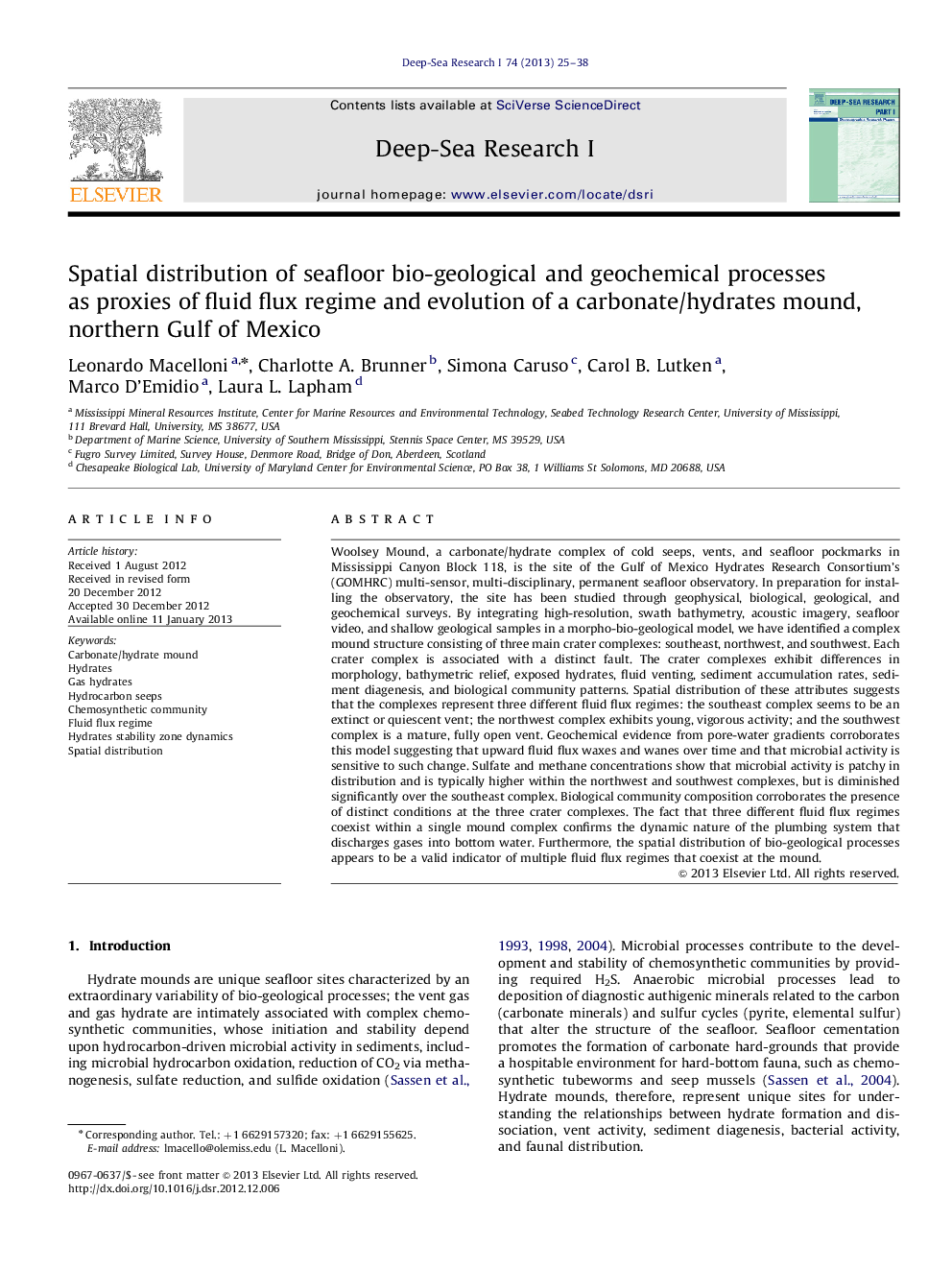| کد مقاله | کد نشریه | سال انتشار | مقاله انگلیسی | نسخه تمام متن |
|---|---|---|---|---|
| 4534634 | 1626356 | 2013 | 14 صفحه PDF | دانلود رایگان |

Woolsey Mound, a carbonate/hydrate complex of cold seeps, vents, and seafloor pockmarks in Mississippi Canyon Block 118, is the site of the Gulf of Mexico Hydrates Research Consortium’s (GOMHRC) multi-sensor, multi-disciplinary, permanent seafloor observatory. In preparation for installing the observatory, the site has been studied through geophysical, biological, geological, and geochemical surveys. By integrating high-resolution, swath bathymetry, acoustic imagery, seafloor video, and shallow geological samples in a morpho-bio-geological model, we have identified a complex mound structure consisting of three main crater complexes: southeast, northwest, and southwest. Each crater complex is associated with a distinct fault. The crater complexes exhibit differences in morphology, bathymetric relief, exposed hydrates, fluid venting, sediment accumulation rates, sediment diagenesis, and biological community patterns. Spatial distribution of these attributes suggests that the complexes represent three different fluid flux regimes: the southeast complex seems to be an extinct or quiescent vent; the northwest complex exhibits young, vigorous activity; and the southwest complex is a mature, fully open vent. Geochemical evidence from pore-water gradients corroborates this model suggesting that upward fluid flux waxes and wanes over time and that microbial activity is sensitive to such change. Sulfate and methane concentrations show that microbial activity is patchy in distribution and is typically higher within the northwest and southwest complexes, but is diminished significantly over the southeast complex. Biological community composition corroborates the presence of distinct conditions at the three crater complexes. The fact that three different fluid flux regimes coexist within a single mound complex confirms the dynamic nature of the plumbing system that discharges gases into bottom water. Furthermore, the spatial distribution of bio-geological processes appears to be a valid indicator of multiple fluid flux regimes that coexist at the mound.
► Multibeam, video images, geochemical and geological data have been collected over Woolsey Mound.
► The data have been integrated in a seafloor bio-geological processes spatial distribution map.
► Map shows a very complex mound: morphology, sediments type, micro\macro fauna, active venting.
► This variability seems be related to different natural hydrocarbon flux along major faults.
► Bio-geological processes spatial distribution indicate multiple flux regimes within the mound.
Journal: Deep Sea Research Part I: Oceanographic Research Papers - Volume 74, April 2013, Pages 25–38